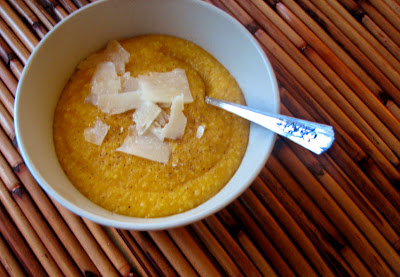This is a different kind of post. I had to read this article for my environment and nutrition course last night and thought everyone should read this.
Here 'tis:
______
The SUV in the PantryAdapted from an article by Thomas Starrs
Courtesy of SustainableBusiness.com
I spend a fair amount of time thinking about how to reduce my family's dependence on energy, particularly energy derived from fossil fuels. I commute to work by bicycle or bus, install compact fluorescents when light bulbs burn out, replace major appliances with the most efficient ones I can afford, and cast jealous glances at my friends who drive hybrids or alternative-fueled vehicles. But until recently, I didn't think of myself as an energy glutton because of the food I eat.
Then I read an astonishing statistic: It takes about 10 fossil fuel calories to produce each food calorie in the average American diet. So if your daily food intake is 2,000 calories, then it took 20,000 calories to grow that food and get it to you. In more familiar units, this means that growing, processing and delivering the food consumed by a family of four each year requires the equivalent of almost 34,000 kilowatt-hours (kWh) of energy, or more than 930 gallons of gasoline (for comparison, the average U.S. household annually consumes about 10,800 kWh of electricity, or about 1,070 gallons of gasoline).
In other words, we use about as much energy to grow our food as to power our homes or fuel our cars.
Overall, about 15% OF U.S. energy goes to supplying Americans with food, split roughly equally between the production of crops and livestock, and food processing and packaging. David Pimentel, a professor of ecology and agricultural science at Cornell University, has estimated that if all humanity ate the way Americans eat, we would exhaust all known fossil fuel reserves in just seven years.
The implications of agricultural energy use for the environment are disturbing. According to the Intergovernmental Panel on Climate Change, agriculture contributes over 20% of human-caused greenhouse gas emissions, including more than 20% CO2, 55% of methane and 65% of nitrous oxide. In addition, our energy-intensive agriculture industry contributes substantially to soil erosion, loss of wildlife habitat, degradation of water quality from chemical runoff and causes other adverse environmental impacts.
Much of the energy embedded in our food comes from growing grains that require further processing to be eaten. Producing a 2-pound box of breakfast cereal, for example, requires the equivalent of burning half a gallon of gasoline.
Eating high on the food chain is even worse. Eating a carrot or an apple gives the diner all the caloric energy in those foods, but feeding these foods to a pig reduces the energy available by a factor of 10. That's because the pig uses most of the energy just staying alive, and stores only a fraction of the energy in the parts we eat. All told, it takes 68 calories of fossil fuel to produce one calorie of pork, and 35 calories of fuel to make one calorie of beef.
Interestingly, the path to reducing the energy intensity of the food system dovetails nicely with the path to a healthy and nutritious diet. It can be summarized in three simple suggestions.
In my hometown of Portland, Oregon, individuals and businesses alike are starting to recognize and respond to the public's concerns about fossil food. Grocery stores featuring locally grown and organic products are common. Farm stands, farmer's markets and community-supported agriculture operations are thriving. Here, even fast food restaurants are using local and organic ingredients.
For instance, Burgerville is a local chain that buys exclusively Oregon Country Beef, the branded product of 40 family ranches in the region that produce an all-natural product made without hormones, genetically modified grain or any animal byproducts. Burgerville promotes the fact that customers can trace the source of their food from ranch to table - and play a role in sustaining the local agricultural economy. Another local company, Hot Lips Pizza, worked with a group of Northwest farmers to create a Food Alliance-certified local market for organic wheat and flour, providing customers with pizza that is sustainably grown. It also is really, really tasty.
After all, you are what you eat.
Take Action!
Identify farmers and producers in your area and look for their products when you shop. You might be surprised at what you'll find! Producers, farmers, markets, and locally-minded businesses can be found online at www.localharvest.org.
Take Food Routes' "Buy Local Challenge" by pledging to spend at least $10 a week on local food. Visit www.foodroutes.org to sign up.





